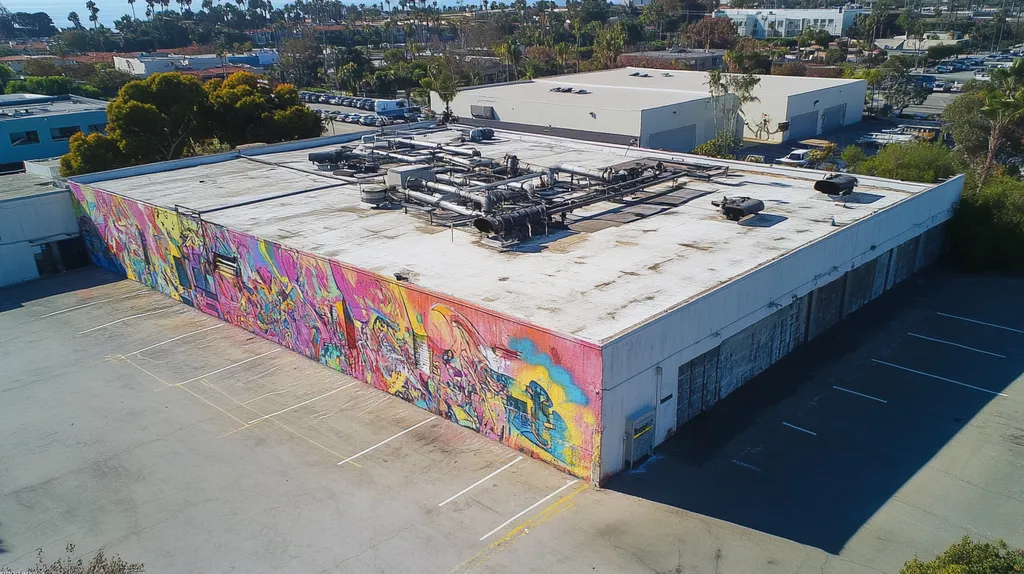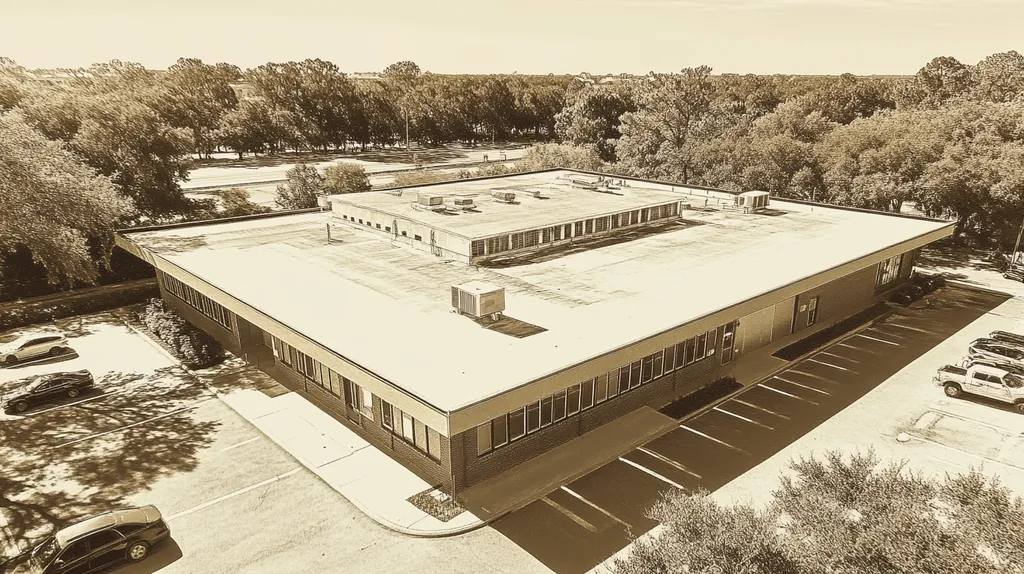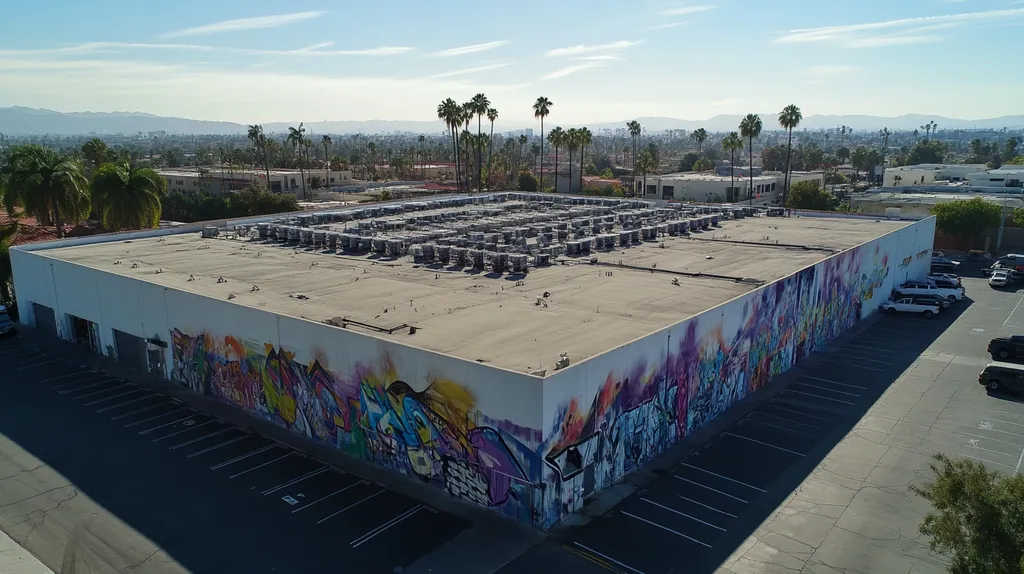Welcome to today’s Battle Royale featuring two roofing heavyweights: “Harness” in the east corner versus “Lanyard” in the west!
Tonight’s showdown pits these contenders against each other across six punishing rounds designed to test every aspect of their performance for Safety Gear for Working on Commercial Roofs.
At stake? Millions in potential costs, decades of building protection, and the critical performance demands of modern commercial and industrial facilities.
Our professional judging panel will evaluate each round on technical merit, real-world performance, and value delivery. After all six rounds, we’ll declare our ultimate champion.
Ladies and gentlemen, facility managers and building owners… it’s time to rumble!
ROUND 1: INITIAL COSTS & INSTALLATION
When a worker plummets from a commercial roof, the first question isn’t about equipment costs – it’s about whether proper safety gear could have prevented the tragedy. Yet budget-conscious facility managers often fixate on price tags while overlooking crucial installation factors that determine whether safety equipment will actually save lives when needed.
Material Expenses
Basic safety harnesses start around $150, with premium models featuring enhanced padding and quick-release buckles pushing north of $600. Factor in required accessories like D-rings and chest straps, and the total package often exceeds $800.
Lanyards present a more economical entry point, typically ranging from $50-200 for complete systems. However, metal roof anchors that properly secure these systems can add $300-500 per anchor point. These anchors are crucial, as they’re designed to support up to 5,000 pounds when properly installed. (source: Fall Protection Pros)
While lanyards offer lower upfront costs, the need for multiple anchor points often equalizes the total investment. For material expenses, this battle ends in a TIE.
Installation Complexity
Harness installation requires methodical attention to detail, with proper fitting and adjustment being critical for worker safety. Most manufacturers mandate certified training for anyone installing or inspecting harness systems.
The process involves carefully measuring workers, adjusting multiple straps and connection points, and documenting proper fit. Rushing through these steps can create deadly risks.
Lanyards win this category handily with their straightforward installation process. Their plug-and-play nature requires minimal training while maintaining safety standards. ADVANTAGE: LANYARDS
Project Timeline
Time is money in commercial roofing, and safety equipment shouldn’t create unnecessary delays. Harness systems typically add 2-3 hours of setup time per worker due to precise fitting requirements.
Lanyard systems can be deployment-ready in under 30 minutes once anchor points are established. This efficiency becomes especially valuable on projects with rotating crew assignments.
The dramatic difference in setup time makes this an easy call. ADVANTAGE: LANYARDS
ROUND 1 RESULTS: LANYARDS WIN
ROUND 2: DURABILITY & LIFESPAN
When safety equipment fails on a commercial roof, the consequences are catastrophic. With fall protection gear experiencing constant exposure to UV rays, moisture, and temperature extremes, durability isn’t just a specification – it’s a matter of life and death. Property managers must understand how different safety systems hold up over time to make informed decisions that protect both workers and budgets.
Material Resilience
Safety harnesses utilize advanced synthetic materials specifically engineered for harsh rooftop conditions. Most quality harnesses maintain their structural integrity for 5-7 years with proper maintenance and storage.
The webbing in modern harnesses resists degradation from UV exposure and maintains flexibility even after thousands of hours in extreme temperatures. This resilience is crucial for maintaining worker safety throughout multiple projects.
Lanyards, while initially robust, typically show wear patterns at connection points within 2-3 years. Their simpler construction makes them more susceptible to environmental damage and stress fatigue.
For long-term material performance and reliability, harnesses demonstrate clear superiority. ADVANTAGE: HARNESS
Maintenance Requirements
Complete roofing fall protection kits require systematic inspection and maintenance to ensure ongoing safety compliance. The Werner K112101 Roofing Kit exemplifies current industry standards for maintaining fall protection systems. (source: Industrial Ladder)
Harnesses need quarterly inspections of all connection points, webbing, and buckles. While thorough, these checks can be completed quickly by trained personnel without specialized tools.
Lanyards demand monthly inspections due to their critical single-point-of-failure nature. Their shock absorbers and connection hardware require careful examination for any signs of stress or wear.
Given the more intensive ongoing maintenance needs of lanyards, harnesses gain another edge. ADVANTAGE: HARNESS
Cost Over Time
Initial purchase price becomes less relevant when considering replacement cycles. Quality harnesses typically last 5-7 years before mandatory replacement, spreading their higher cost across multiple projects.
Lanyards often need replacement every 2-3 years, sometimes sooner in harsh environments. While individual units cost less, more frequent replacement cycles can double or triple lifetime expenses.
Both systems require similar documentation and certification renewal costs. The main difference lies in replacement frequency rather than maintenance expenses.
When analyzing total cost of ownership, the longer lifespan of harnesses creates substantial savings. ADVANTAGE: HARNESS
ROUND 2 WINNER: HARNESS
ROUND 3: PERFORMANCE FACTORS
Falls remain the leading cause of death in construction, with improper safety equipment contributing to over 30% of rooftop accidents. For commercial property managers, understanding how safety gear performs under real-world conditions isn’t just about compliance – it’s about preventing tragedies. This round examines crucial performance factors that separate effective fall protection from dangerous inadequacy.
Effectiveness in Fall Protection
When a fall occurs, the distribution of impact forces determines survival. Full-body harnesses spread arrest forces across the strongest parts of the body, reducing the risk of internal injuries during sudden stops.
Modern harnesses incorporate multiple connection points and integrated shock absorption, providing controlled deceleration that can mean the difference between minor bruising and catastrophic injury. Their full-body design maintains an upright position during falls, keeping airways clear and enabling self-rescue.
Lanyards, while critical components, lack the biomechanical protection of a complete harness system. Their single attachment point concentrates forces dangerously without proper distribution.
For pure effectiveness in preventing fall injuries, harnesses demonstrate clear superiority. ADVANTAGE: HARNESS
Range of Motion
Productivity suffers when safety equipment restricts movement. The latest harness designs incorporate articulated D-rings and flexible webbing that allow workers to reach, bend, and maneuver naturally across varied roof surfaces.
Most harnesses now feature quick-adjust buckles and strategic padding placement that maintain comfort without compromising security. This enables longer work periods without fatigue-induced safety risks.
Lanyards offer excellent mobility within their radius but can create dangerous pendulum effects if workers move too far laterally. Their simple design makes them ideal for specific tasks but limiting for complex movements.
When considering overall freedom of movement while maintaining safety, harnesses take another win. ADVANTAGE: HARNESS
Emergency Response Features
Metal roof anchors supporting up to 5,000 pounds provide crucial attachment points for both systems during rescues. However, harnesses incorporate additional features specifically designed for emergency response. (source: Fall Protection Pros)
Built-in rescue loops, trauma straps, and high-visibility materials make harnesses superior for first responder assistance. Their standardized lift points enable faster extraction when minutes matter.
Lanyards lack integrated rescue features, requiring additional equipment and time during emergencies. This limitation can critically delay response times when rapid evacuation becomes necessary.
For emergency scenarios, harnesses provide clear advantages that can save lives. ADVANTAGE: HARNESS
ROUND 3 WINNER: HARNESS
ROUND 4: MAINTENANCE REQUIREMENTS
Every year, preventable accidents occur because of improperly maintained fall protection equipment. While initial safety gear selection matters, long-term maintenance determines whether that equipment will actually save lives when needed. For facility managers, understanding these maintenance requirements isn’t just about compliance – it’s about preventing tragedies that devastate families and destroy businesses.
Inspection Frequency
Safety harnesses require documented monthly visual inspections of all webbing, D-rings, and buckles. These checks typically take 15-20 minutes per unit when performed by trained personnel following manufacturer checklists.
Annual third-party certifications are mandatory for harness systems, requiring specialized testing equipment and expertise. This comprehensive review process helps catch subtle degradation before it becomes dangerous.
Lanyards demand weekly visual inspections due to their critical single-point-of-failure nature. Their simpler design makes checks faster but more frequent, averaging 5-10 minutes per inspection.
While both systems require regular attention, harnesses offer more practical inspection intervals. ADVANTAGE: HARNESS
Storage Requirements
The efficient approach to maintaining safety equipment requires proper storage solutions that protect critical components. Fall Protection Distributors emphasizes that integrated safety solutions demand comprehensive care to maintain compatibility between components. (source: Fall Protection Distributors)
Harnesses need climate-controlled storage areas with dedicated hooks or hangers. This keeps webbing from developing permanent creases and prevents moisture accumulation that can weaken fibers.
Lanyards can be stored more compactly but require protection from UV exposure and chemical contamination. Their shock absorbers are particularly sensitive to environmental conditions.
Given the simpler storage needs of lanyards, they gain an edge in this category. ADVANTAGE: LANYARDS
Documentation Requirements
Every piece of fall protection equipment requires detailed maintenance records to maintain OSHA compliance. These logs must track inspection dates, findings, repairs, and eventual replacement schedules.
Harness documentation follows standardized formats that simplify record-keeping. Most manufacturers provide QR-coded tags that link directly to digital maintenance portals.
Lanyard documentation demands more frequent updates due to their accelerated inspection schedule. This creates additional administrative overhead that can strain maintenance departments.
The streamlined documentation process for harnesses provides clear benefits. ADVANTAGE: HARNESS
ROUND 4 WINNER: HARNESS
ROUND 5: SUSTAINABILITY CREDENTIALS
With environmental regulations tightening and corporate sustainability mandates expanding, roofing safety equipment faces unprecedented scrutiny of its ecological impact. Every component installed on a commercial roof must now demonstrate environmental responsibility alongside worker protection. The stakes extend beyond immediate safety to long-term environmental compliance and corporate sustainability goals.
Material Sustainability
The environmental footprint of safety equipment begins with raw materials and manufacturing processes. Modern harnesses primarily use virgin synthetic materials, with most manufacturers still resistant to incorporating recycled content due to strength requirements.
Recent innovations in lanyard design have enabled the use of up to 40% recycled materials without compromising structural integrity. Their simpler construction allows for easier material substitution and validation.
Metal roof anchors, while essential for both systems, utilize recyclable materials and can support up to 5,000 pounds when properly installed. (source: Fall Protection Pros)
For overall material sustainability and recycled content integration, lanyards demonstrate clear advantages. ADVANTAGE: LANYARDS
End-of-Life Management
When safety equipment reaches retirement age, proper disposal becomes critical for environmental protection. Harness systems present significant recycling challenges due to their complex multi-material construction and integrated components.
Most harnesses end up in landfills because separating their various materials proves cost-prohibitive. Their synthetic webbing can take decades to decompose, contributing to long-term environmental impact.
Lanyards offer simpler recycling pathways, with many manufacturers now providing take-back programs. Their streamlined design enables efficient material recovery and reprocessing.
The superior recyclability of lanyard systems creates another clear victory. ADVANTAGE: LANYARDS
Carbon Footprint
Manufacturing emissions represent a growing concern in safety equipment selection. Harness production requires extensive energy input for weaving, cutting, and assembly of multiple components.
The complex supply chains supporting harness manufacturing often span multiple continents, increasing transportation-related emissions. Their larger size and weight also impact shipping efficiency.
Lanyard systems typically require fewer production steps and generate lower manufacturing emissions. Their compact size enables more efficient shipping and reduced transportation impacts.
For overall carbon footprint considerations, lanyards maintain their environmental edge. ADVANTAGE: LANYARDS
ROUND 5 WINNER: LANYARDS
ROUND 6: SPECIALIZED APPLICATIONS
When specialized commercial roofing tasks go wrong, the consequences extend far beyond standard workplace injuries. Complex installations, maintenance on unusual roof configurations, and work around sensitive equipment demand safety solutions that adapt to challenging environments while maintaining absolute protection.
Extreme Environment Performance
Specialized commercial roofing often involves extreme conditions that push safety equipment to its limits. From scorching temperatures on black membrane roofs to high-wind conditions on skyscrapers, protection systems must perform flawlessly under intense stress.
Harnesses demonstrate superior stability in extreme environments, with their multi-point attachment systems maintaining worker position even in challenging conditions. Their distributed support prevents dangerous shifts during sudden weather changes or emergency situations.
Lanyards can become hazardous in extreme conditions, with single attachment points creating dangerous pendulum effects during high winds. Their simpler design, while effective in standard conditions, lacks the adaptability needed for specialized challenges.
For managing extreme environmental challenges, harnesses provide clear advantages. ADVANTAGE: HARNESS
Technical Access Requirements
Metal roof anchors supporting up to 5,000 pounds provide crucial attachment points for accessing complex installations. These anchors can be bolted, clamped, or welded to work surfaces, ensuring workers remain secured during technical operations. (source: Fall Protection Pros)
Harness systems offer superior positioning capabilities for detailed technical work. Their multiple attachment points allow workers to maintain stable positions while performing intricate tasks on varied roof surfaces.
Lanyards limit worker positioning options, often requiring frequent reattachment to maintain proper access angles. This limitation can compromise both safety and efficiency during specialized maintenance procedures.
The enhanced positioning flexibility of harnesses creates another clear advantage. ADVANTAGE: HARNESS
Equipment Compatibility
Modern roofing often requires workers to carry specialized tools and monitoring equipment. Safety systems must accommodate these requirements without compromising protection or mobility.
Harness designs incorporate tool loops, equipment holders, and customizable attachment points that maintain worker balance while carrying necessary gear. Their distributed weight management prevents dangerous shifts when moving with heavy equipment.
Lanyards offer minimal equipment carrying capacity and can create dangerous imbalances when workers attempt to transport tools. Their simple design provides no integrated solution for managing specialized equipment needs.
For maintaining safety while managing specialized equipment, harnesses demonstrate clear superiority. ADVANTAGE: HARNESS
ROUND 6 WINNER: HARNESS
AND THE WINNER IS…
After six grueling rounds of technical evaluation, we have our verdict. With a dominant 4-2 victory, the SAFETY HARNESS claims the championship belt!
The harness demonstrated crushing superiority in durability, performance, maintenance efficiency, and specialized applications. Its full-body protection, superior emergency features, and adaptability to extreme conditions delivered knockout blows in critical categories.
While defeated, the lanyard system proved itself a worthy challenger, especially in Round 1 with faster setup times and Round 5 with superior sustainability credentials. For straightforward, short-duration projects where quick deployment matters more than technical positioning, lanyards remain a viable contender.
However, every facility brings unique challenges to the ring. Building height, roof configuration, local weather patterns, and specific maintenance requirements can all affect equipment selection. While this matchup provides valuable insights, property managers should always consult qualified safety professionals who can evaluate their specific situation.
Ladies and gentlemen, in the high-stakes arena of commercial roofing safety, there’s no substitute for making informed decisions based on your building’s unique needs. The real victory comes not from following the crowd, but from choosing the right protection for your specific battleground.
FREQUENTLY ASKED QUESTIONS
Q. What are the initial costs for commercial roof safety gear?
A. Costs for safety gear can vary significantly. Basic harnesses start at about $150, while premium versions exceed $600. Lanyards are generally cheaper, costing between $50 and $200, but including multiple required anchors can ramp costs up to $500 per point. Factor in these expenses to assess your total investment.
Q. How does the durability of a harness compare to a lanyard on industrial roofs?
A. Harnesses typically last 5-7 years with proper care, designed to withstand UV and harsh conditions. Lanyards, however, may show wear within 2-3 years, especially at critical connection points. For longevity and safety, harnesses generally outperform lanyards.
Q. Which offers better performance for fall protection on commercial roofs?
A. Harnesses excel in fall protection, distributing forces across the body to minimize injury. They feature shock absorbers and multiple connection points that help maintain an upright position during falls. Lanyards provide limited protection, concentrating force at a single attachment point, increasing injury risk.
Q. What are the maintenance requirements for safety gear on industrial roofs?
A. Harnesses need monthly inspections that document their condition, requiring about 15-20 minutes each. Annual certifications are necessary for harnesses. Lanyards, due to their design, demand weekly inspections but take less time per check, averaging just 5-10 minutes.
Q. How do sustainability credentials differ for harnesses and lanyards?
A. Lanyards show greater sustainability by utilizing up to 40% recycled materials, while harnesses predominantly rely on virgin synthetic materials. Additionally, lanyards often have better recycling programs compared to harnesses, which are typically less recyclable due to their material complexity.
Q. Can harnesses and lanyards perform well in extreme environments on commercial roofs?
A. Harnesses are designed for extreme conditions, ensuring stability and safety even in intense weather. Their multi-point attachments help workers maintain proper position. Lanyards, while functional in standard conditions, can become hazardous in severe environments, increasing the risk of falls.
Q. How do I choose between a harness and lanyard for commercial roofing?
A. Consider the project’s specific needs: harnesses offer superior safety and performance, especially for dynamic tasks, while lanyards are simpler and easier to deploy. If efficiency and worker mobility are key, lanyards may be beneficial, but for comprehensive safety, harnesses are generally the better choice.











